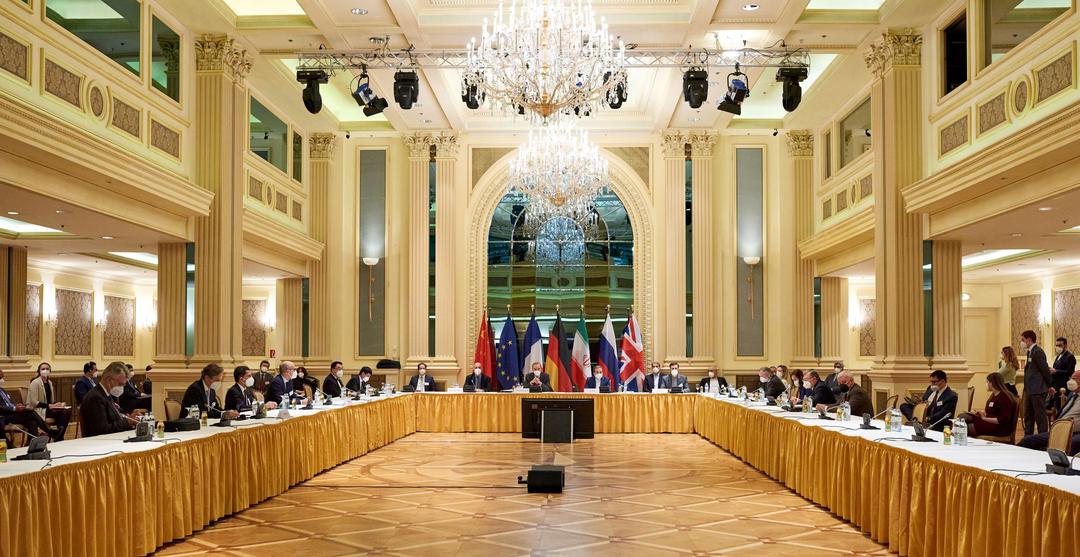2. Both US President Joe Biden and President Raisi have pledged to revive the deal but are waiting for each other to make the first move. The Biden administration expects Iran to return to full compliance before American diplomats engage in discussions, while President Raisi wants full US sanctions relief as a precondition to direct talks and returning to JCPOA. This game of “you go first” is likely the main reason as to why negotiations have stalled.
3. Even if the United States and Iran finally break the ice and come to the negotiations table, there will likely be a long round of confidence building before they reach a meaningful resolution. Mutual concessions* as part of confidence building will probably be the main challenge to the negotiations as both parties fear repercussions at home. The Biden administration fears being perceived as weak by the US Congress and American public while the Raisi government must deliver on promises of being tough on the United States.
*Concessions to watch for:
. Removal of the Iranian Revolutionary Guards Corps (IRGC) from the US Department of State terrorist watchlist.
. US-Iran prisoner exchange.
. US removal of some, but not all non-nuclear sanctions on Iran, in addition to the nuclear-related sanctions.
. US financial rewards as compensation for damage done by sanctions on Iran. (very unlikely)
4. The advanced state of Iran’s nuclear program, the catastrophic damage done to US-Iranian relations under Trump, as well as the election of a hardline government in Tehran will render future negotiations difficult and limited in scope.
PRESIDENT RAISI’S “ALL IN” GAMBLE
5. It is highly likely that President Raisi is waiting until Iran nears a nuclear weapon before opening negotiations. By engaging in diplomacy with the United States at such a late stage, Tehran hopes to raise the stakes and pull more concessions from Washington. For example, the removal of all US sanctions on Iran, not just those related to the nuclear program, is a highly desirable outcome for Tehran.
6. President Raisi’s presumed “all in” gamble comes at great risk. Push too much to the point of no return, and Israel might engage in large-scale military action to delay the program. Israel has reportedly sabotaged Iran’s nuclear facilities through covert action, the latest involving a drone attack, while Iran has blamed Israel for the assassination of the head of Iran’s nuclear program in November 2020. Israeli Prime Minister Naftali Benett has recently announced that Iran has crossed “all nuclear red lines” and that Tel Aviv will never allow Tehran to obtain a nuclear weapon.
HOW CLOSE IS IRAN TO THE A-BOMB?
7. Israeli estimates, traditionally more alarmist, claim that Iran is between four and 10 weeks away from reaching nuclear capability. While the exact countdown to an Iranian atomic bomb is difficult to objectively pinpoint, it is clear that Iran is alarmingly close to the nuclear threshold.
8. Iran started breaching the JCPOA’s limits in 2020, in a step-by-step response to former US President Donald Trump's withdrawal from the deal in May 2018, and the reimposition of US sanctions. More exactly, Iran has taken the following steps in breach of the JCPOA to advance its nuclear capacity (as reported by the International Atomic Energy Agency):
- Increased uranium enrichment from a purity of 3.67% (and later, 4.67%) to at least 20% at the Fordow plant. Iran was close to increasing uranium enrichment even further to 60%, just below the 90% threshold needed for bombs, and even planned to install faster cascades (IR-2 and IR-4) to expedite the process. However, an explosion at the Natanz centrifuge assembly facility in April 2021, believed to be the result of Israeli sabotage, destroyed over 1,000 centrifuges, preventing Iran from increasing uranium enrichment. In June 2021, the centrifuge production facility in Karaj was also destroyed in an unclaimed kinetic strike - likely an Israeli drone operation.
- Stockpiled a record volume of highly enriched uranium. Iran went from 139 kilograms of enriched uranium in May 2018 (when Trump withdrew from the JCPOA), to over 3,000 kg in early 2021.
9. Iran is advancing its nuclear program at such a rapid pace that simply returning to JCPOA compliance will soon not be an option. As US Secretary of State Anthony Blinken said: “We are getting closer to a point at which a strict return to compliance with JCPOA does not reproduce the benefits that the agreement achieved” (i.e. delaying or preventing a nuclear bomb).
RESURRECTING A DEAD DEAL: ONGOING EFFORTS
WITH THE P4+1 or P5+1:
10. In April 2021, the remaining JCPOA signatories (P4+1**) began talks in Vienna to bring the United States and Iran back into the deal. The last meeting between Iran and P4+1 took place in Vienna in June 2021. Direct negotiations collapsed after Raisi assumed office in July.
**P4+1: The permanent members of the US Security Council, besides the United States, namely China, France, Russia and the United Kingdom; plus Germany. The P5+1, which encompasses all original signatories of the JCPOA, includes the United States.
11. In September 2021, Iran said that nuclear talks with world powers will resume in a “few weeks” although it is unclear if this will include the United States, So far there has been no obvious official, direct communication between the Raisi government and the Biden administration.
12. Indirect talks and informal meetings between the United States and Iran have reportedly taken place through in-between diplomacy with European states and other parties. The Swiss embassy in Tehran, Oman, and Qatar are also well established backchannels that Washington and Tehran use to exchange messages.
WITH THE IAEA:
13. Iran renewed the IAEA’s*** monitoring mandate in early September, and promised to allow the inspectors to install memory cards on surveillance cameras at Iran’s nuclear sites. Previously, the IAEA was unable to monitor Iran’s nuclear activity as the organization’s mandate expired in early June and the Raisi government refused to extend it. In late September, the IAEA complained that Iran has not honoured the agreement.
***IAEA: International Atomic Energy Association: based in Vienna, the IAEA is an international organization that seeks to promote the peaceful use of nuclear energy, and to inhibit its use for any military purpose, including nuclear weapons. In 2015, Iran and the P5+1 format mandated the IAEA to monitor and verify Iran’s compliance with the JCPOA.
OUTLOOK
. In a best-case scenario: Iran will return to the negotiations table with the P4+1 or P5+1 this year but only if the Biden administration makes clear concessions that the Raisi government can boast about at home.
. In a worst-case scenario: Iran will continue to advance its nuclear program without returning to the negotiations table, either because the United States failed to meet its demands, or because a return to JCPOA compliance is not an option anymore. This will lead to either a new series of negotiations for a new deal (for the next years), or even worse, trigger further and more intense Israeli military action against Iranian nuclear sites.
. A middle-ground scenario sees Iran returning to the negotiations table in 2022 - regardless if US compensations are satisfactory - with the prospect of re-establishing a diluted and fragile JCPOA.



